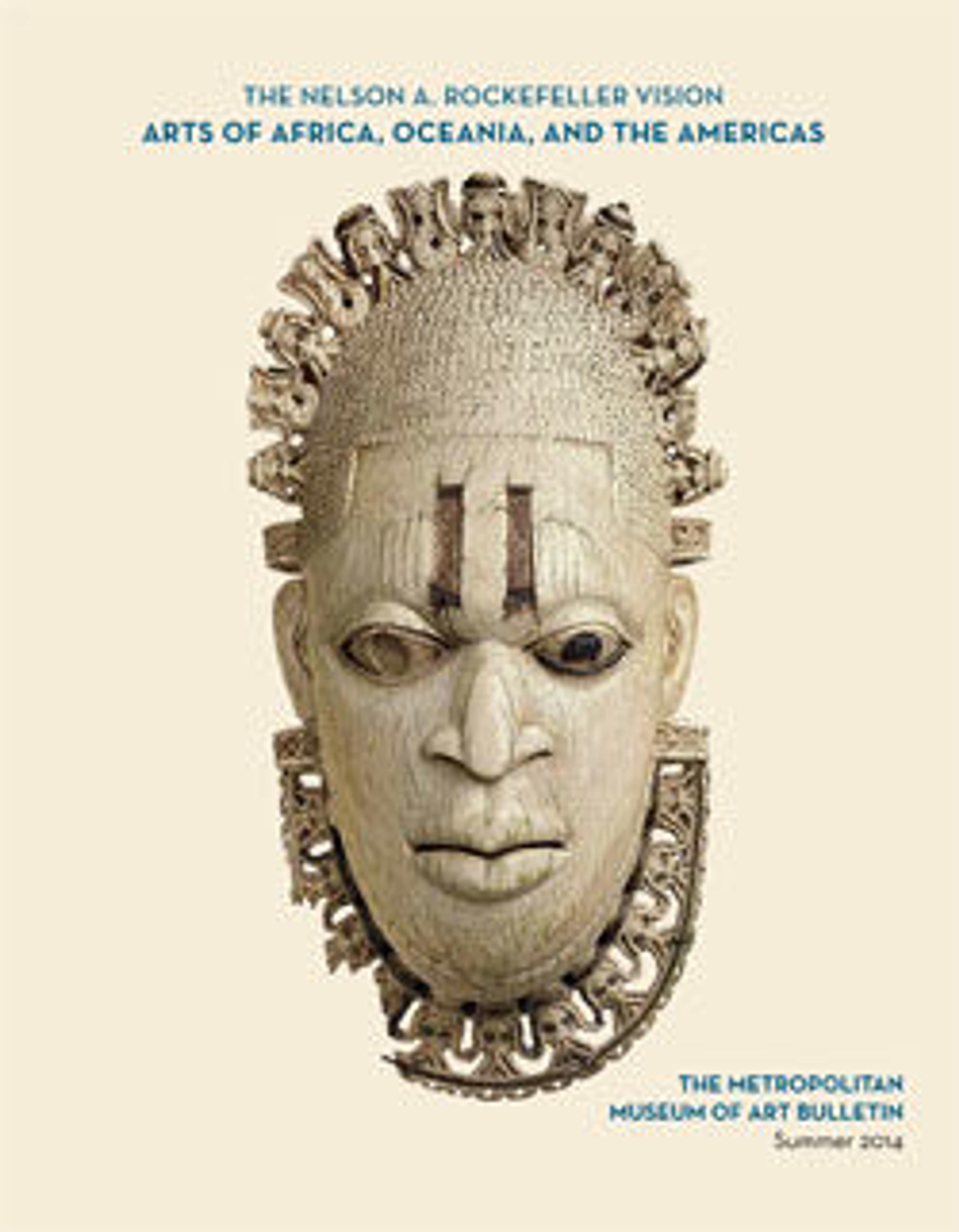Zok (elephant) mask for a beete performance
Sub-Saharan peoples south of an imaginary line extending from the lower Cross River in Cameroon eastward to southern Somalia speak related languages known collectively as Bantu. Although the cradle of this linguistic family lies in the Benue Valley of Nigeria, over the centuries peoples with this heritage have come to occupy all of central Africa. The Kwele are among the Bantu-speaking peoples who live in western equatorial Africa's rain forest. During the precolonial era, inhabitants of the region adhered to a highly diffuse notion of territoriality. Loose clusters of village settlements composed of lineage groups were easily disrupted by internal antagonisms that led to the founding of new communities. To mitigate social fragmentation, Kwele leaders developed the rite of beete, which dissipated conflict by redirecting attention to ancestral relics owned by specific lineages. Integrated into the rite were dances led by masked performers called ekuk, or "things of the forest." Most ekuk masks bore prominent animal attributes, including the bata, or ram, mask, which was characterized by horns curved around the face. Other animal features, such as trunks and beaks, inspired Kwele artists to carve elements that project beyond a single pictorial field.
Artwork Details
- Title:Zok (elephant) mask for a beete performance
- Artist:Kwele artist
- Date:19th–first half of 20th century
- Geography:Gabon or Republic of the Congo, Ivindo or Sangha River region
- Culture:Kwele peoples
- Medium:Wood, pigment, kaolin
- Dimensions:H. 30 x W. 5 7/8 x D. 10 5/8 in. (76.2 x 14.9 x 27 cm)
- Classification:Wood-Sculpture
- Credit Line:The Michael C. Rockefeller Memorial Collection, Gift of Nelson A. Rockefeller, 1964
- Object Number:1978.412.292
- Curatorial Department: The Michael C. Rockefeller Wing
More Artwork
Research Resources
The Met provides unparalleled resources for research and welcomes an international community of students and scholars. The Met's Open Access API is where creators and researchers can connect to the The Met collection. Open Access data and public domain images are available for unrestricted commercial and noncommercial use without permission or fee.
To request images under copyright and other restrictions, please use this Image Request form.
Feedback
We continue to research and examine historical and cultural context for objects in The Met collection. If you have comments or questions about this object record, please contact us using the form below. The Museum looks forward to receiving your comments.
